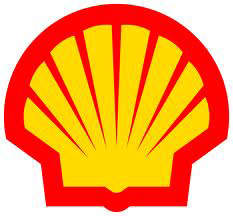The Kebabangan gas field is located in the South China Sea, 130km offshore Sabah, East Malaysia. It is part of the Kebabangan Cluster, which contains two more fields Kamunsu East and Kamunsu East Upthrown Canyon.
The water depth at the cluster ranges from 100m to 400m.
The cluster is owned by Petronas Carigali (40%), ConocoPhillips (30%) and Shell (30%). The three co-owners signed the development and production sharing contract for the cluster in 2007.
The Kebabangan Petroleum Operating Company (KPOC) joint venture was set up to act as the cluster operator, and The Kebabangan Northern Hub Project was undertaken to develop the three fields in the cluster.
The project began with the development of the Kebabangan field. Production began in November 2014.
Kebabangan discovery and reserves
Shell discovered the Kebabangan field in 1994. An exploration well drilled at the field encountered a thick column of gas and a thin rim of oil.
Following this, an appraisal well was drilled in 2002. The well penetrated gas columns in a number of reservoir intervals.
The Kebabangan field is estimated to contain approximately two trillion cubic feet (tcf) of gas.
Field development
The field is tied back to an integrated platform that is designed to serve the entire cluster. The development involved the drilling of 12 subsea production wells and the construction of a drilling and production platform. The drilling was carried out in two phases.
Kebabangan platform
The Kebabangan platform is a floating platform with the capacity to handle 825 million cubic feet of gas (mcf) and 22,000 barrels of condensate a day. It is installed in a water depth of 142m (466ft).
The topsides are installed onto a fixed eight-leg steel jacket in place, weighing 12,300t. The deck weighs 17,000t and features a tender-assisted drilling (TAD) rig, utilities and accommodation for staff.
The Malikai deepwater field developed by Shell will also be tied to the platform. The platform is designed with surplus capacity so that third party fields can also be tied in future.
Kebabangan gas field details
The Kebabangan field will produce 130 to 140 million barrels of oil equivalent a day (MBOED) at peak.
The produced gas reaches the platform, from where it is transferred by a pipeline to the Sabah Oil and Gas terminal built by Petronas at Kimanis. The terminal is located approximately 135km away from the field.
A subsea pipeline of 24in diameter and 135km length was laid to carry the gas from the platform to the terminal at Sabah. Another pipeline of 14in diameter was laid to carry the oil produced at the platform.
The produced gas first reaches the SOGT from where it is sent to the Petronas liquefied natural gas (LNG) complex at Bintulu through a 500km pipeline for processing.
Contracts for the Kebabangan gas field
The front-end engineering and design (FEED) contract of the project was awarded to Aker Solutions. The four-year contract is valued at Nkr170m (approximately $30m).
Aker completed conceptual engineering in December 2008 and began detailed design in February 2010. It subcontracted Semar to conduct a pre-FEED study on the feasibility of constructing the platform.
A $380m (RM1.15bn) contract to fabricate the topsides of the platform was awarded to Sime Darby Engineering in April 2011. The fabrication is expected to be completed in 29 months.
Kencana Petroleum fabricated a substructure for the project as part of an RM208m contract received from KPOC in April 2011.





